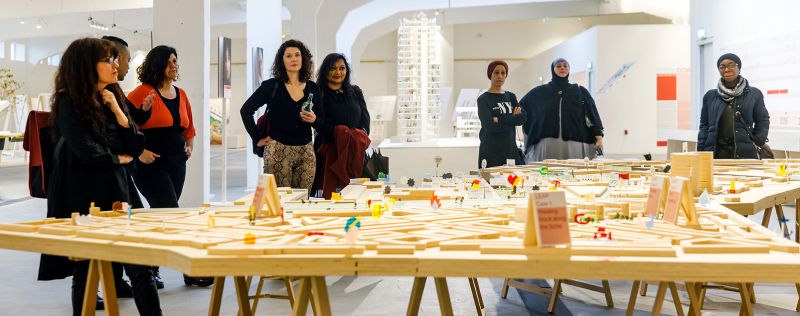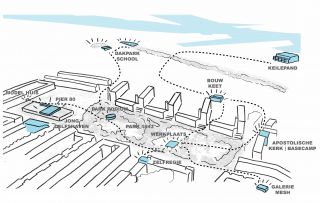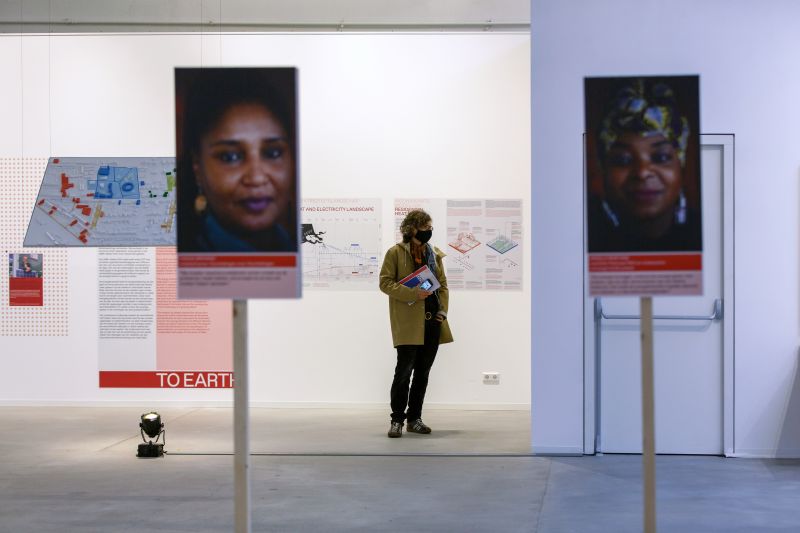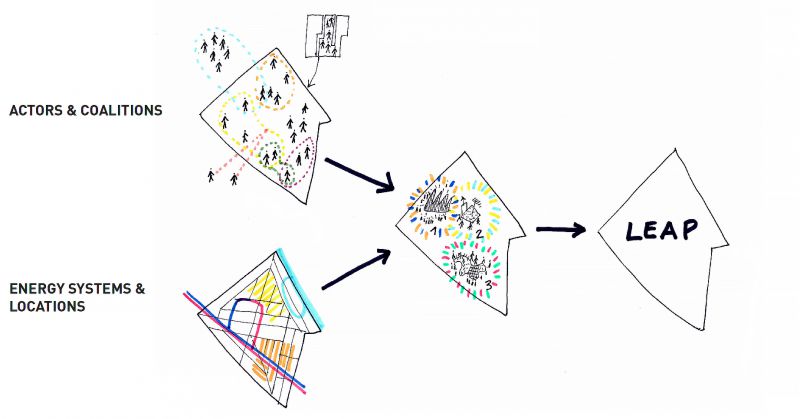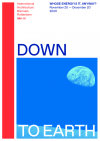The exhibition DOWN TO EARTH: WHOSE ENERGY IS IT, ANYWAY? focuses on the energy transition at neighborhood level. On the energy district as an energetic district. Urgent issues converge at this scale level and large and small players –governments, companies, civil society and residents– must reach a new covenant. In and with the neighborhood, it is also possible to explore how the energy transition can be used as a lever for broader, comprehensive transformational change.
Natural gas-free neighborhoods for a post-fossil world
In the Netherlands, according to the National Climate Agreement of 2019, circa 5,000 districts will have to become gas-free. Initial experience shows that this is not at all easy. There are many complications, for instance with implementation and, above all, financing and local support. Actually, we just don’t know yet how to wean our districts off of natural gas.
At the same time, this operation is part of a much larger challenge, the global transition to sustainable energy, which is not only politically and ecologically urgent, but at the same time unimaginably far-reaching. Everything we do, individually and together - living and working, study and leisure - is largely determined by access to and use of energy. The energy transition is not only a technical and financial, but also a social and cultural challenge. The decisions that are made and will be made concern us all. The energy transition is the elephant in the room of politics. There can be no energy transition without a thoroughly democratic discussion about the ownership of that transition.
The transition to sustainable energy can be readily used for such a debate. After all, sun and wind, and soon hydrogen, belong to everyone, why not the energy that we can generate with them? We have approach the energy transition as an opportunity, as a lever for much broader change. This requires new collaborations, new roles, at all levels of scale. The neighborhood is the scale at which these new collaborations can best take shape. There, the idea of a new energy commons can be explored, a playing field in which citizens can play their part in addition to governments and companies.
IABR–Atelier Rotterdam in BoTu
In Rotterdam too, all districts have to be weaned off of natural gas. The city pointed to five to lead the way. One of these is Bospolder-Tussendijken, also known as BoTu, one of the poorest districts in the Netherlands. But it is not only fragile, it is also resilient: culturally diverse, empowered and self-aware. That is why the IABR chose BoTu.
Here, the
IABR–Atelier Rotterdam, a collaboration between IABR and the municipality of Rotterdam, has spent the past two years exploring how the energy transition that is inevitable can be a lever for what is aspired to. Can residents really become co-owners of the transition and in such a way that it contributes to social inclusion and the sustainable improvement of their living environment and quality of life?
From building blocks to action plan
Atelier Rotterdam first researched the social and spatio-energetic building blocks needed for a future, truly resilient BoTu, for it to become clear what the specific energy challenge in BoTu actually is. How much energy is used? How much less energy will be needed after the houses are modified? How much renewable energy can be generated in the district itself? Which spatial interventions will help? How much energy will still be needed and where will it come from? An investigation into the choices that still need to be made, and the possible returns.
An anthropological exploration by the Atelier of the known and unknown, often invisible social networks in BoTu provides insight into the potential power of residents. To what extent can and do they want to be co-producers of their living environment and take responsibility for the transition? An identification of the social building blocks needed to link the energy transition to other, more integral local challenges, such as the sustainable improvement of quality of life and the living environment.
In order to actually realize a transition that is broadly supported and implement it spatially, a LEAP is required, a Local Energy Action Plan, which the IABR–Atelier Rotterdam has developed together with many partners in and residents of Bospolder-Tussendijken. The LEAP is presented in DOWN TO EARTH: WHOSE ENERGY IS IT, ANYWAY? which makes the exhibition also a launching pad for activities which we float in the spring of 2021 in BoTu itself.
IABR–Atelier East Flemish Core Area
The exhibition also includes space for the IABR–Atelier East Flemish Core Area, which the IABR set up in 2017 together with the Province of East Flanders. Particularly for the Demonstratieproject Eeklo, an exploration in this East Flemish municipality of how the already built-up environment can be redesigned, as it were, by putting the opportunities that the inevitable energy transition offers in the lead.
Curators
The curators of the exhibition are George Brugmans (IABR), Eva Pfannes (OOZE Architects and Urbanists) and Thijs van Spaandonk (Bright and Head Master Urban Design of the Rotterdam Academy of Architecture and Urban Design).
Brugmans and Van Spaandonk developed the narrative of the exhibition. You can download their key texts at the bottom of this page.
WHOSE ENERGY IS IT, ANYWAY? is open to the public from Friday November 20 through Sunday December 20, from Tuesday to Sunday, from 11 am to 5 pm. The exhibition is closed on Mondays.
Please note that, given the pandemic, IABR follows the guidelines of the Dutch Health Authority. This way, we can ensure that there are never too many people present at the same time and that every visit is a safe visit. Therefore, visitors have to reserve times slots, which you can do by clicking here
For all visitors information, click here

